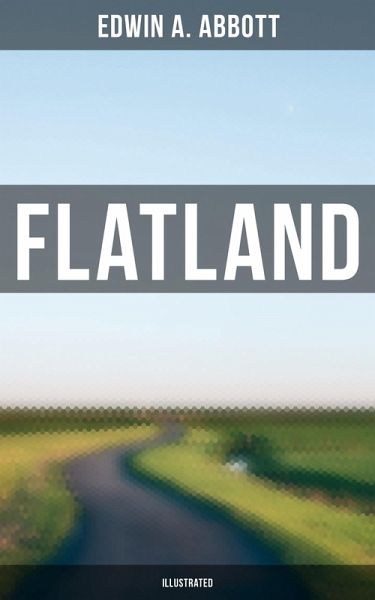
FLATLAND (Illustrated) (eBook, ePUB)
A Romance of Many Dimensions

PAYBACK Punkte
0 °P sammeln!
Edwin A. Abbott's 'Flatland (Illustrated)' is a groundbreaking work of mathematical fiction that explores the concept of multiple dimensions through the lens of a two-dimensional world inhabited by geometric shapes. The book provides a satirical commentary on Victorian society while also serving as a thought-provoking allegory on the limitations of human perception. Abbott's use of allegory and satire creates a playful yet insightful narrative that challenges readers to think beyond their perceived realities. As a respected scholar and theologian, Edwin A. Abbott's background in mathematics an...
Edwin A. Abbott's 'Flatland (Illustrated)' is a groundbreaking work of mathematical fiction that explores the concept of multiple dimensions through the lens of a two-dimensional world inhabited by geometric shapes. The book provides a satirical commentary on Victorian society while also serving as a thought-provoking allegory on the limitations of human perception. Abbott's use of allegory and satire creates a playful yet insightful narrative that challenges readers to think beyond their perceived realities. As a respected scholar and theologian, Edwin A. Abbott's background in mathematics and classical literature likely influenced his creation of 'Flatland'. His precise and detailed explanations of geometry and dimensions showcase his dedication to accurately portraying a two-dimensional world. Abbott's intellectual curiosity and passion for exploring new ideas shine through in the pages of 'Flatland', making it a unique and thought-provoking read for readers of all ages. I highly recommend 'Flatland (Illustrated)' to readers interested in philosophical fiction, mathematics, and social commentary. Abbott's clever narrative and innovative approach to storytelling make this book a must-read for anyone looking to expand their understanding of dimensions and perception.
Dieser Download kann aus rechtlichen Gründen nur mit Rechnungsadresse in A, B, BG, CY, CZ, D, DK, EW, E, FIN, F, GR, H, IRL, I, LT, L, LR, M, NL, PL, P, R, S, SLO, SK ausgeliefert werden.













